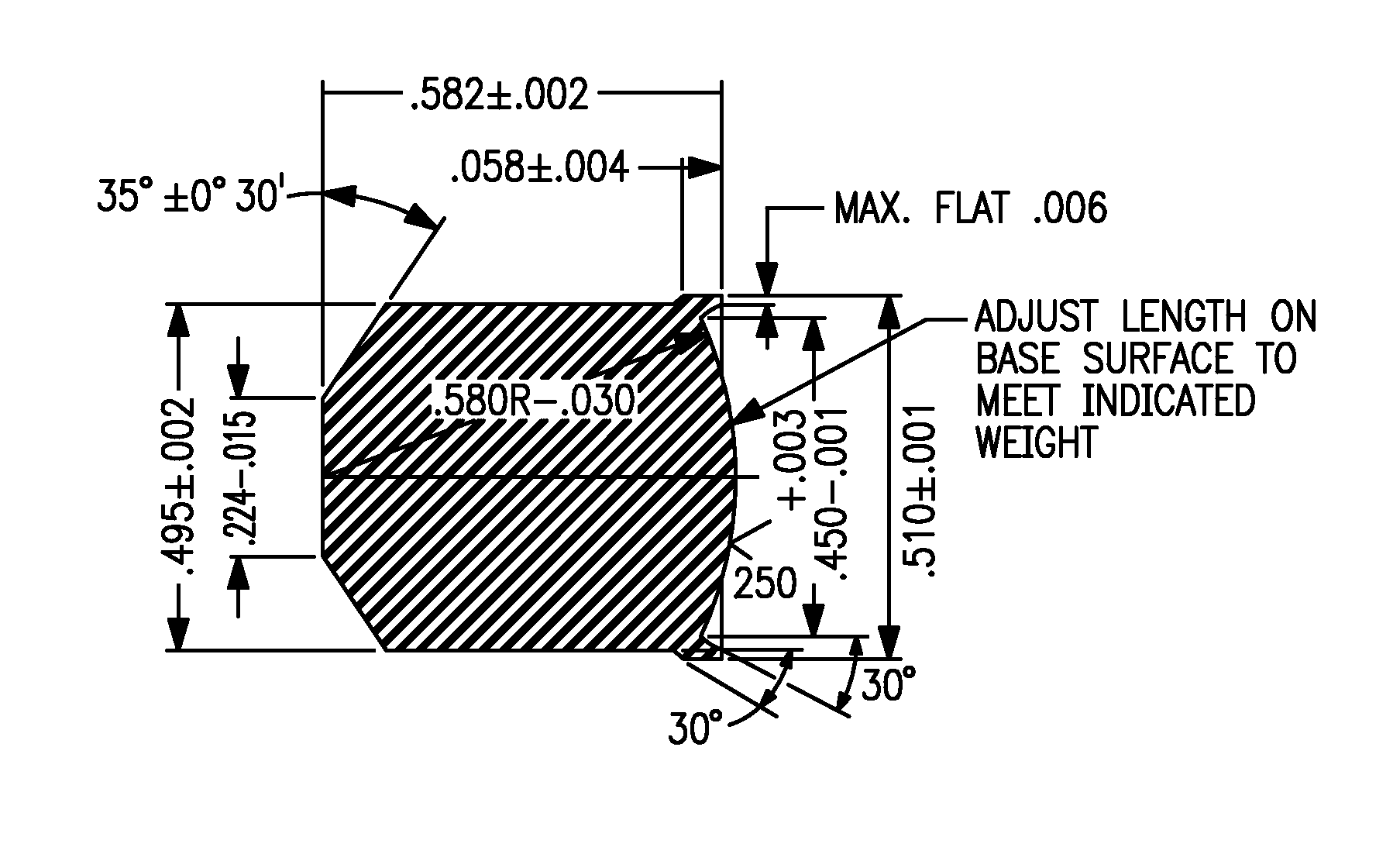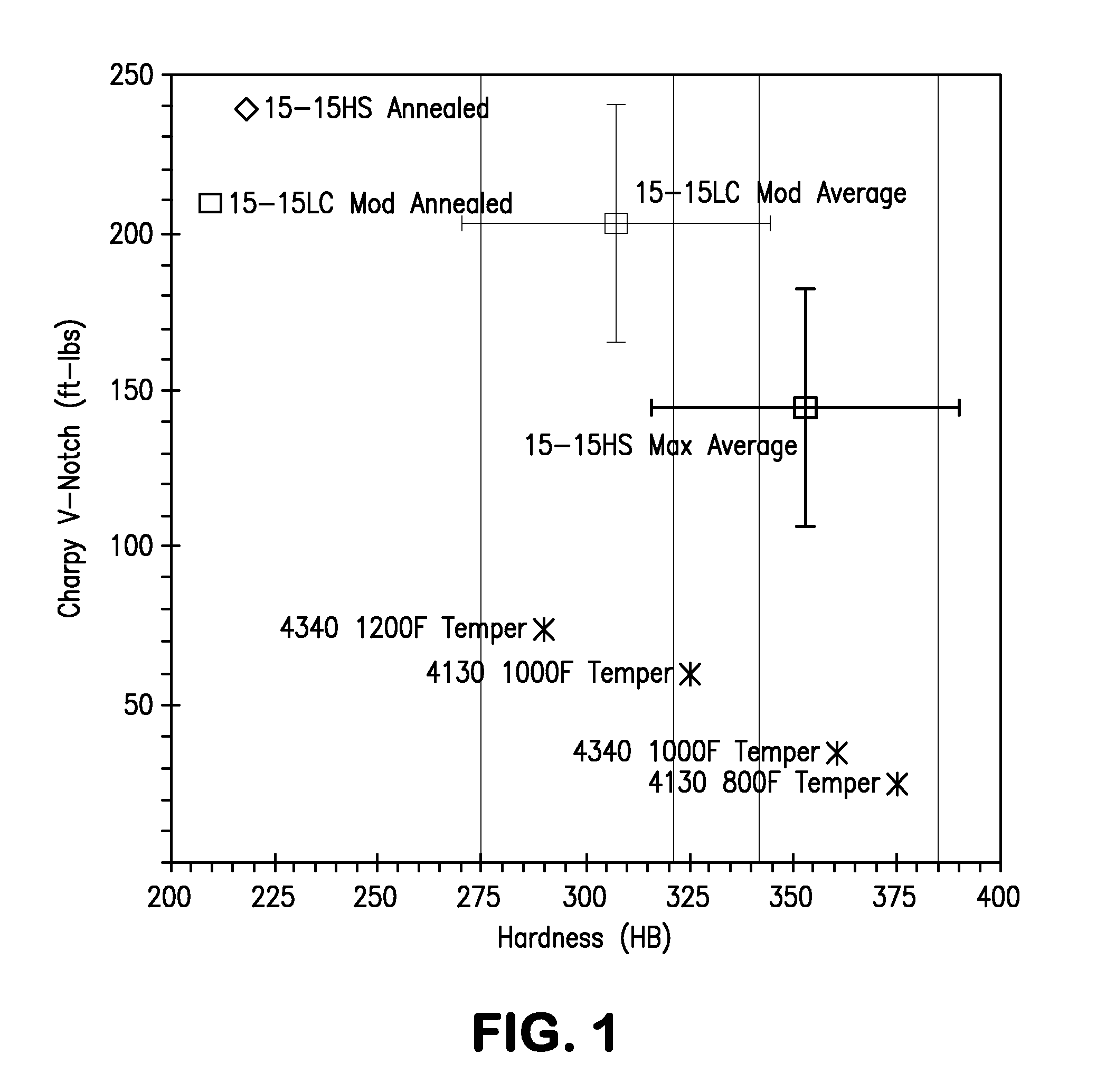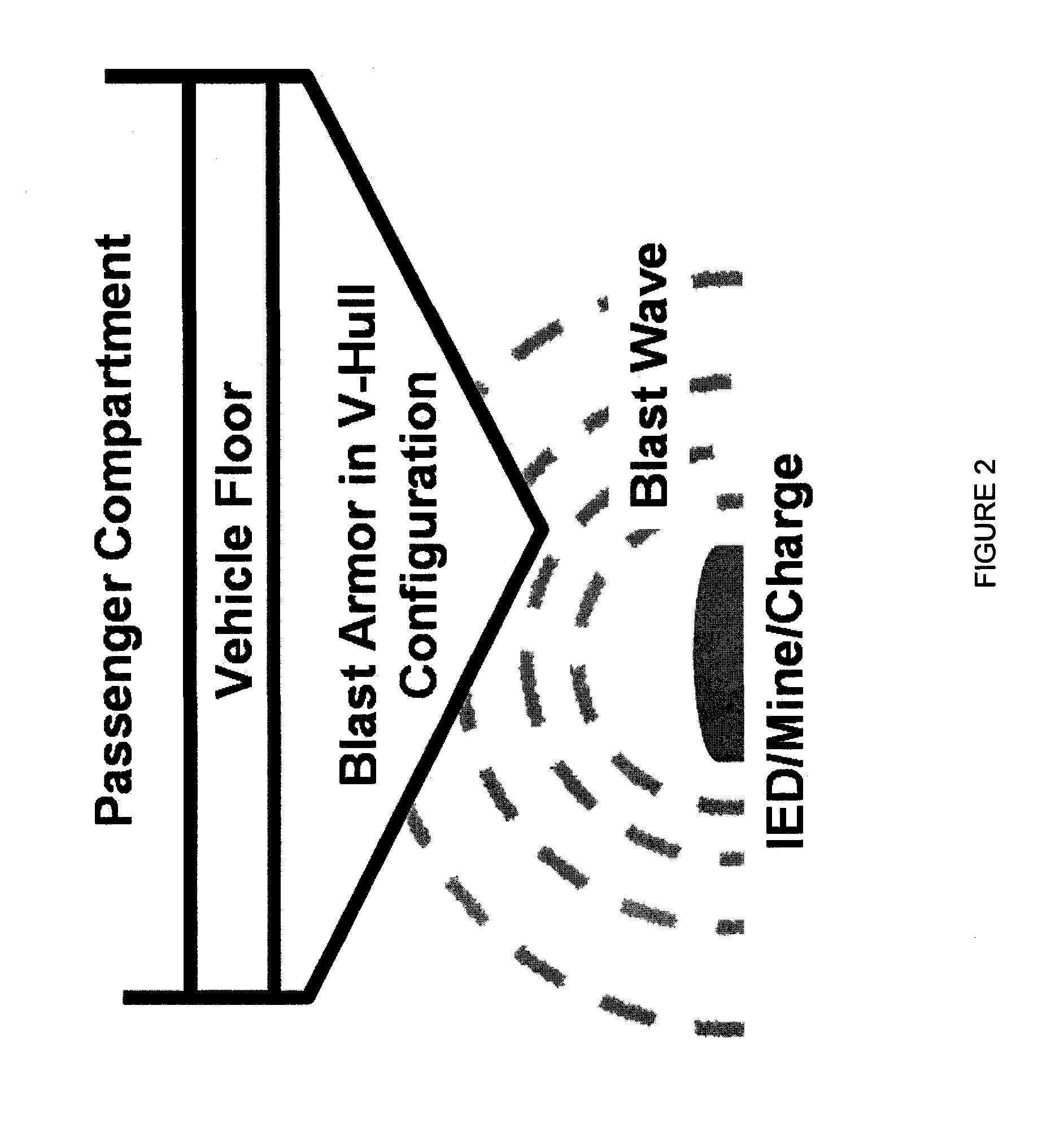Blast Resistant, Non-Magnetic, Stainless Steel Armor
- Summary
- Abstract
- Description
- Claims
- Application Information
AI Technical Summary
Benefits of technology
Problems solved by technology
Method used
Image
Examples
working examples
[0021]In order to demonstrate the process and product of the present invention, two heats were melted and processed into plate. The plate material was then tested to determine the relevant mechanical properties, ballistic tolerance, and blast resistance of the as-processed material. The weight percent compositions of the two heats are set forth in Table 1 below.
TABLE 1ElementHeat 1Heat 2C0.0350.027Mn17.9918.41Si0.360.37P0.0220.028S0.001Cr17.6618.56Ni0.941.97Mo0.770.74Cu0.060.06N0.520.57B0.00190.0024
The balance of each heat is iron and usual impurities. Heat 1 was ARC-AOD melted whereas Heat 2 was ARC-ESR melted.
example 1
[0022]The objective of this example was to produce plate material in accordance with the first process described above. Material from the ingot of Heat 1 and from the ingot of Heat 2 was hot worked to provide slabs 2.58 inches (6.55 cm) thick. The slab formed from Heat 1 was heated to a temperature of 1650° F. (899° C.) and hot rolled to 0.55 inch (13.97 mm) thick plate. The slab formed from Heat 2 was heated to a temperature of 1650° F. (899° C.) and hot rolled to 0.53 inch (13.5 mm) thick plate. For both heats, the plate material was quenched with water within about 10 minutes of the last rolling pass. Longitudinal and transverse samples for hardness, tensile, and toughness testing were cut from the plates and machined to form standard size test specimens. The results of room temperature hardness, tensile, and Charpy V-notch toughness testing are shown in Tables 2A and 2B below including the Brinell hardness number (BHN), the 0.2% offset yield strength (YS) and ultimate tensile st...
example 2
[0023]The objective of this example was to produce plate material using the two-step process described above. Additional material from the ingot of Heat 2 was hot worked to provide slabs nominally 5 inches (12.7 cm) thick. The slabs were then hot rolled to intermediate thicknesses. A first slab was hot rolled from a start temperature of about 2100° F. (1149° C.) to an intermediate thickness of about 0.72 inches (18.3 mm). A second slab was rolled from a start temperature of about 2100° F. (1149° C.) to an intermediate thickness of about 0.905 inches (23 mm). A third slab was rolled from a start temperature of about 2100° F. (1149° C.) to an intermediate thickness of about 1.25 inches (31.75 mm). A fourth slab was rolled from a start temperature of about 2100° F. (1149° C.) to an intermediate thickness of about 2.55 inches (6.48 cm). The intermediate forms were rapidly cooled with water within about 5 minutes of completion of the last rolling pass on each intermediate slab. After the...
PUM
| Property | Measurement | Unit |
|---|---|---|
| Temperature | aaaaa | aaaaa |
| Temperature | aaaaa | aaaaa |
| Temperature | aaaaa | aaaaa |
Abstract
Description
Claims
Application Information
 Login to View More
Login to View More - R&D
- Intellectual Property
- Life Sciences
- Materials
- Tech Scout
- Unparalleled Data Quality
- Higher Quality Content
- 60% Fewer Hallucinations
Browse by: Latest US Patents, China's latest patents, Technical Efficacy Thesaurus, Application Domain, Technology Topic, Popular Technical Reports.
© 2025 PatSnap. All rights reserved.Legal|Privacy policy|Modern Slavery Act Transparency Statement|Sitemap|About US| Contact US: help@patsnap.com



